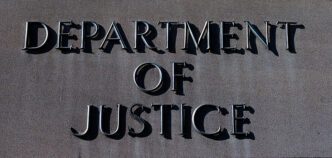Federal regulators have mandated corrective actions for the Keystone Pipeline operator following a significant oil spill in North Dakota. A rupture led to the release of 147,000 gallons of crude oil onto farmland, prompting safety measures to be enforced. The Pipeline and Hazardous Materials Safety Administration (PHMSA) has instructed South Bow, the operator, to conduct a thorough examination of the compromised pipeline section through mechanical and metallurgical testing by an independent laboratory.
In addition, South Bow is required to perform a root cause analysis of the rupture and review in-line inspection reports from the last decade to detect any potential issues present in the failed pipe or adjoining sections. These steps aim to prevent future incidents and ensure the pipeline’s integrity. PHMSA has confirmed full cooperation from South Bow, with investigators on-site in North Dakota and Calgary to assess the accident’s cause.
The assessment of the pipeline’s special permit is also part of the directive, focusing on its allowance for operation at higher-than-normal pressures. This evaluation could lead to new conditions or modifications to enhance safety standards.
South Bow is currently investigating the cause of the spill, which occurred near Fort Ransom, North Dakota, approximately 60 miles southwest of Fargo. The incident resulted in the release of about 3,500 barrels of oil. Recovery efforts are underway, with thousands of gallons of oil already retrieved from the site.
Pipeline operations will not resume until federal approval is granted. Despite this, South Bow plans to restore energy deliveries by Tuesday, adhering to regulatory orders. The company has mobilized cleanup and repair teams equipped with vacuum trucks and other necessary tools to continue recovery efforts over the weekend.
Additionally, South Bow has agreed to impose pressure restrictions on Canadian sections of the Keystone Pipeline in collaboration with Canadian energy regulators. Stretching 2,689 miles from Alberta, Canada, to refineries in Illinois, Oklahoma, and Texas, the pipeline’s closure has sparked concerns over potential impacts on energy prices, particularly gasoline and diesel.
South Bow emphasized that the primary focus remains on ensuring the safety of personnel and minimizing environmental risks. The company is committed to the Fort Ransom community and will persist with cleanup operations until full remediation of the site is achieved.
The Evolving Landscape
This development in the Keystone Pipeline situation underscores the broader implications for energy markets and environmental safety. The temporary closure of the pipeline could influence energy prices, affecting consumers and industries reliant on gasoline and diesel. Moreover, the event highlights the importance of stringent safety protocols and responsive measures to mitigate environmental hazards.
For local communities in North Dakota, the spill represents significant environmental concerns and potential economic impacts. The incident may also prompt enhanced regulatory scrutiny and updates to safety regulations to prevent similar occurrences in the future. As South Bow continues remediation efforts, stakeholders across the energy sector and affected regions remain attentive to how these actions unfold and influence future operational standards.






